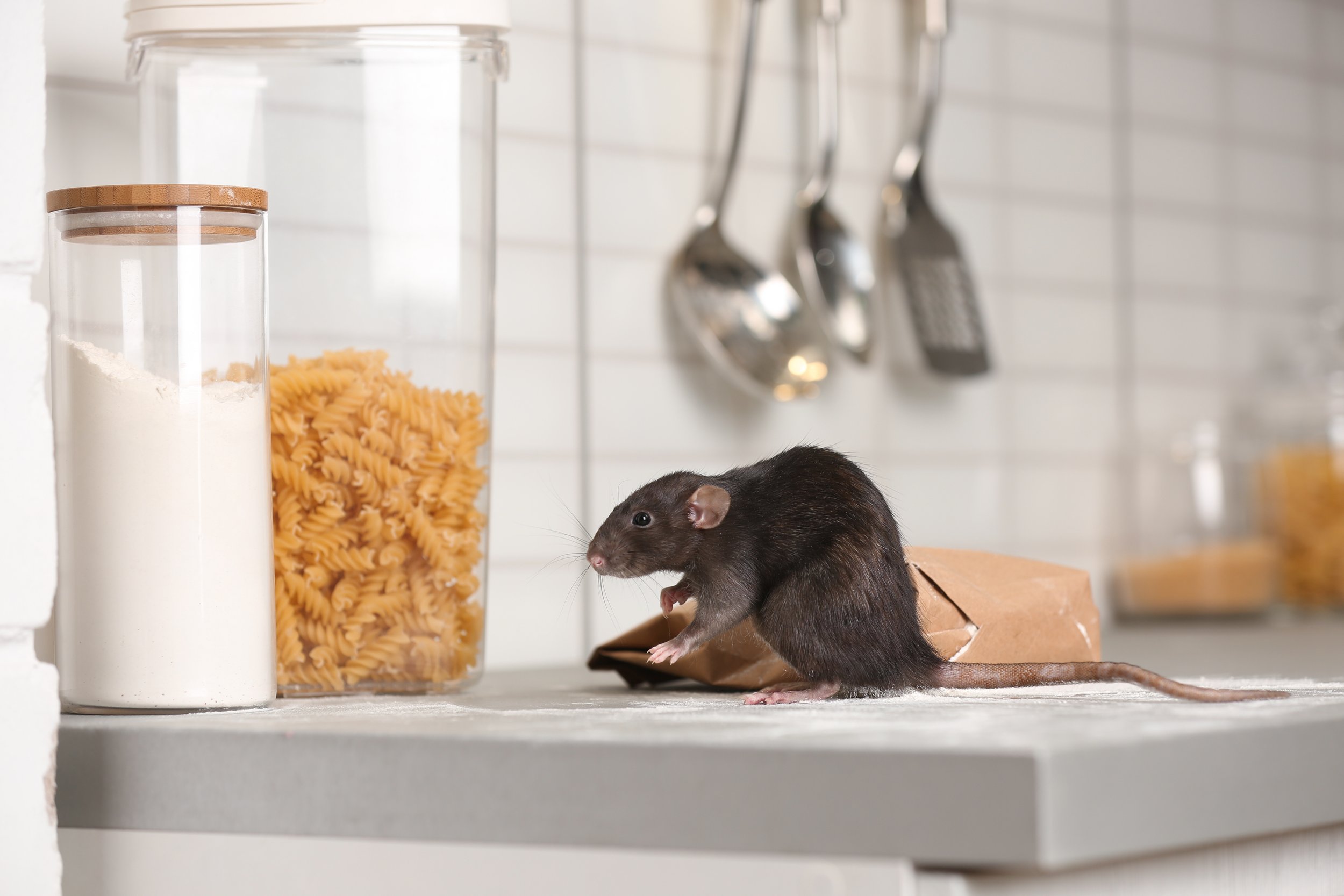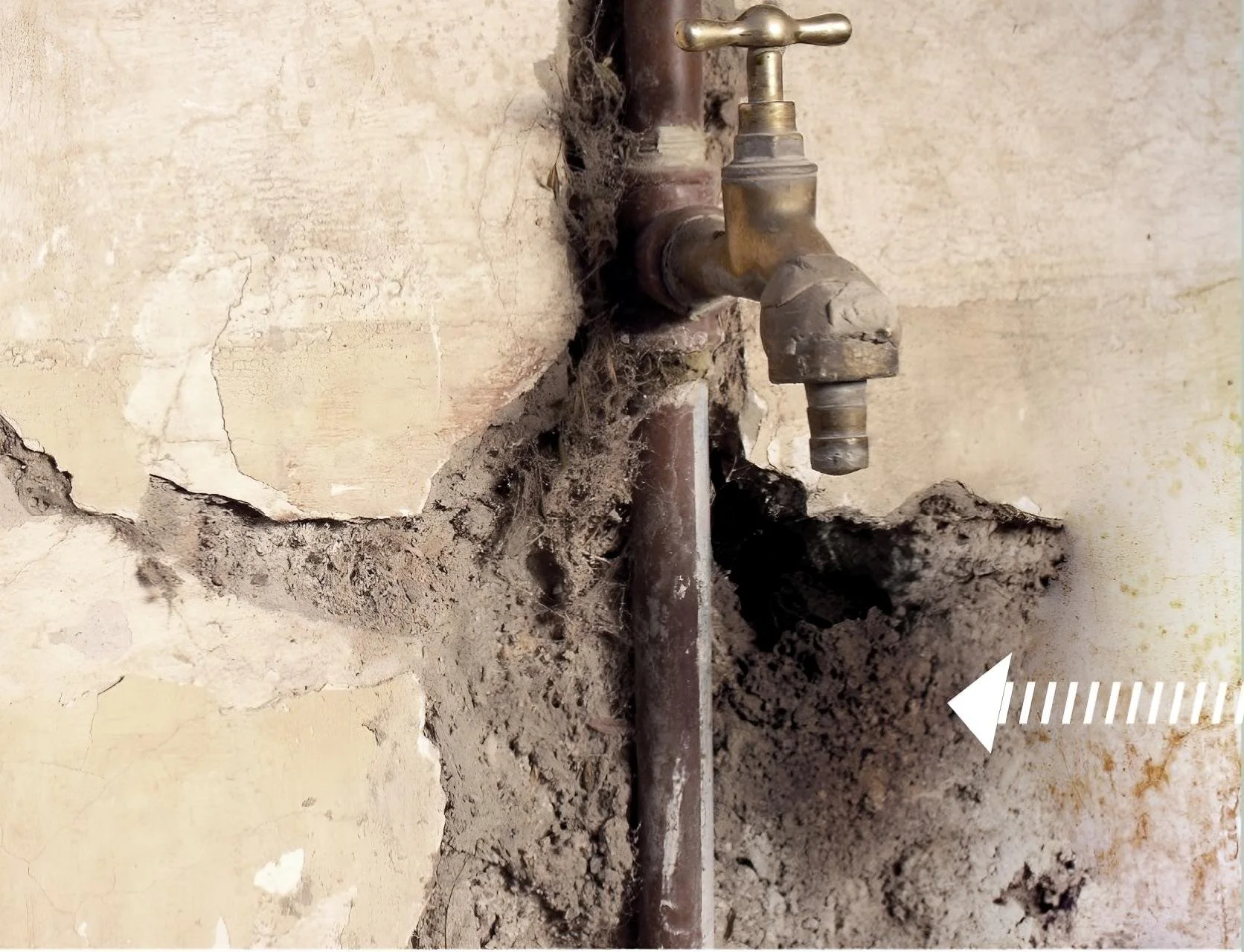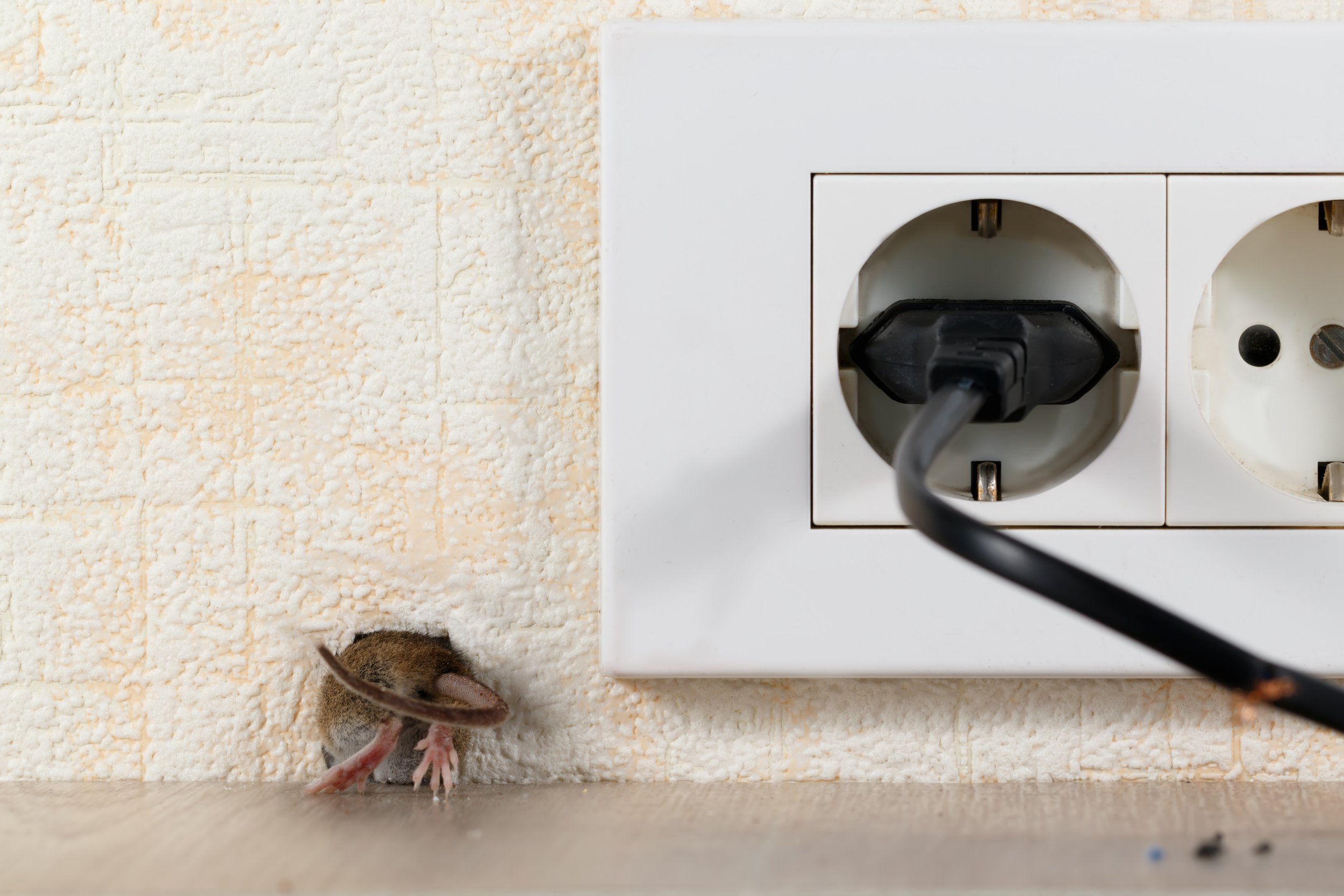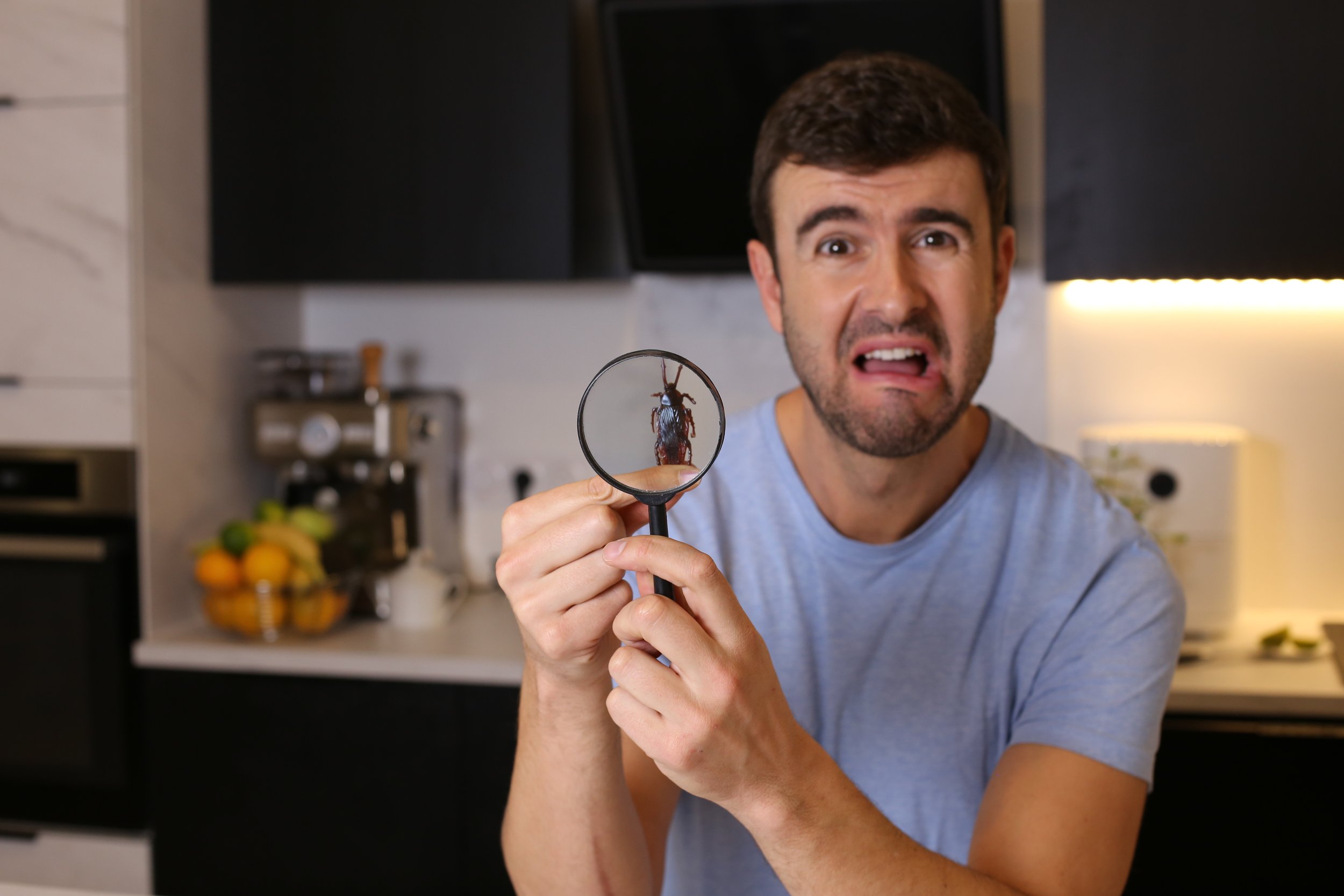12 Clear Signs of a Rodent Infestation in Your Home

JONATHAN GIORGI
Pest Control Specialist | Lic. #13597
Published on February 11, 2024
When rats and mice invade homes, they make their presence known through various signs of activity. These signs are the clues rodents leave behind as they build nests, create openings, travel along their runways, and forage for food and water within your home.
Failing to notice and address a rodent infestation immediately could pose health risks to you and your family or result in damage to your home. Being able to recognize these signs early on enables you to eliminate these unwelcome guests before they become a major problem.
Here are twelve clear signs that you have a rodent infestation in your home:
The Twelve Clear Signs of a Rodent Infestation
1. Sightings
The clearest sign of a rodent infestation is seeing them in your home.
Rodents are nocturnal and are most active from sunset (5 pm) to sunrise (5 am), which is when you are most likely to encounter them. Despite their efforts to remain unseen due to their nature as prey animals, it is not uncommon to see rodents quickly darting from one hiding spot to another as they try to evade detection.
When rats and mice invade homes, they build nests in hidden, protected areas and forage for food and water at night. Rats typically forage within a 100-foot radius of their nest, while mice usually search for food and water within a 30-foot radius of theirs. This means if you spot a rodent inside your home, it's likely not far from its nest.
2. Droppings
The most common sign of a rodent infestation is droppings. Recognizing what these look like can help you identify an infestation immediately.
Rats and mice leave droppings wherever they go, making this the easiest sign to spot. If you start noticing shiny black or brown pellets in your cabinets, drawers, or on the floor, you likely have rats or mice in your home.
But before you declare an all-out war on the rodents, you need to be sure about what you are actually seeing—it is easy to mistake lint and dirt for droppings.
The simplest way to tell the difference is to put on disposable gloves, pick up the suspicious item, and roll it between your fingers.
If it’s soft and fluffy → it’s lint.
If it’s solid but breaks apart easily → it’s dirt.
If it’s solid and does not break apart → it’s a dropping!
3. Strange Noises
The first auditory clue that you have rodents in your home is hearing strange noises.
When rats build nests in your home, you are likely to hear them in the ceiling, wall voids, or floorboards at night—especially between sunset and sunrise. Initially, the noises may be faint and infrequent. However, as rats settle in, these sounds will become louder and more regular.
The key thing to remember is that rats are loud, while mice are quiet. If you are hearing persistent, loud scurrying, scratching, or gnawing noises at night, it is likely you have rats in your attic or crawlspace.
4. Gnaw Marks
Gnaw marks, or bite marks, are a visible sign of damage indicating the presence of rodents in your home.
Rodents gnaw on a wide variety of materials, including food packaging, building materials, and wires. These marks are evidence of the damage rats and mice cause as they chew on things to create openings, gather nesting material, access food containers, and file down their teeth.
If you have rats or mice in your home, you will begin to notice items being torn into, such as rugs, floor mats, cushions, cardboard boxes, paper, insulation, and food containers. Holes may also appear in your baseboards or the drywall around pipes. You might even experience electrical issues due to rodents chewing on wires!
If you notice something that appears to have been chewed on or torn into, you should investigate immediately.
5. Foul Odor
A foul odor is another telling sign that you have rodents in your home.
When rats and mice infiltrate homes, they build nests, forage for food, and start reproducing. As the size of the infestation grows, or even if a single rodent inhabits your home for an extended period, their waste accumulates, leading to an increasingly strong smell.
Consequently, a musky, urine-like odor becomes noticeable, often coming from hidden, enclosed spaces like attics, basements, crawl spaces, garages, storage rooms, and sheds. In cases where the infestation is near ventilation, you might even notice this foul smell coming from air vents or behind walls.
If you begin to smell a musky, urine-like odor in your home, it’s a strong indicator of either an active or a significant rodent problem.
6. Rub Marks
Rub marks, or grease marks, are black to brown discolorations left on walls, floorboards, pipes, and wooden beams from the oils on a rodent's fur.
Rats and mice are creatures of habit, often using the same routes to move from one location to another. As they travel along these runways, the oil from their fur rubs off onto surfaces, causing them to stain. Identifying rub marks can help you determine the runways rodents are using to navigate in and around your home.
If you notice black or brown discolorations on walls, floorboards, pipes, or wooden beams, it’s a clear sign you have rodents in your home.
7. Scratch Marks
Scratch marks are another strong indicator of a rodent infestation in your home.
Rodents leave scratch marks with their claws on wooden beams, pipes, plastic containers, food packaging, and other objects as they attempt to climb, open, tunnel, or dig.
While scratch marks are less apparent than gnaw marks because they don't cause immediate damage to the structure or object, they become quite noticeable when rodents climb onto tables, countertops, and shelves.
If you notice scratch marks on any objects in your home, you should inspect for other signs of rodent activity as well.
8. Pets Acting Strange
Pets are more aware of their surroundings than humans due to their heightened sense of smell and hearing. If you have rodents in your home, it’s likely that your pets will start to exhibit unusual behaviors, such as sniffing in odd places or staring at walls or ceilings.
Some common locations where pets might sniff or stare include:
Indoors:
Around kitchen appliances (refrigerator, stove, and dishwasher)
Near the fireplace
By air vents
Behind the couch
Inside closets
At the wall or ceiling
Outdoors:
In bushes and ivy
Underneath decks
Along the exterior walls of the house
Pay close attention if your pets begin acting strangely. There’s a strong chance they will detect the presence of rodents before you do.
9. Nests
Rodents typically build nests in dark, hidden, protected areas such as crawl spaces, attics, basements, garages, or in the kitchen behind countertops, refrigerators, and stoves.
These nests are usually made from a collection of soft materials such as shredded paper, fabric, insulation, and cardboard, which are loosely gathered together to form a "bed" or resting place.
Given that these nests are built in secluded locations, they can be challenging to find. However, if you notice soft materials torn into pieces or missing, it's an unmistakable sign a rodent is nesting in your home.
10. Runways
Runways are the paths rodents use to navigate in and around your home. You can identify these paths by looking for footprints, tail marks, or rub marks.
Indoors, finding rodent runways can be challenging, as footprints and tail marks are only visible in dusty environments. To track a rodent's movements, consider using a tracking powder, which is any fine, non-toxic powder used to track a rodent’s movements. Suitable options include baby powder, flour, cornstarch, baking soda, food-grade diatomaceous earth, talcum powder, and arrowroot powder. When a rodent crosses over the tracking powder, its footprints and tail marks will become visible, allowing you to track the path it uses from its nest to the areas it searches for food and water.
Outdoors, runways appear as smooth, beaten-down paths through the dirt or grass, kept clear of vegetation and natural debris like leaves and twigs. Footprints may also be visible, especially in wet or soft soil.
Pro Tip: To increase your chances of catching rodents quickly, set traps along their runways.
11. Missing Food
Rats and mice are omnivores, consuming both plants and animals. They are opportunistic feeders that eat whenever possible.
Rats typically eat two larger meals a day, once at dusk and once at dawn, whereas mice tend to eat 20-30 smaller meals per day. Both rats and mice store food, a behavior known as "caching," as they like to have a constant supply of food available whenever they feel hungry.
When rats and mice infest homes, it's common to find food packaging torn open, nibble marks on food, and pieces of food missing. Notably, dog and cat food often becomes the number one choice for rats and mice due to its easy accessibility and high nutritional content.
Regularly noticing food missing, eaten, or nibbled on is a sure sign you have rodents in your home.
12. Rodent Bites
The last sign that you have rodents in your home is being bitten by a rodent.
In a typical infestation scenario, this is extremely rare, as rats and mice are prey animals and typically avoid direct human interaction. However, if cornered or threatened, rodents may lunge and bite to defend themselves. Instances of rats and mice biting individuals in their sleep have also been reported but are exceptionally rare.
If you or someone else is bitten by a rodent, take the following steps:
Clean the wound with soap and water.
Apply an antiseptic cream.
Cover the wound with a bandage to stop the bleeding.
Monitor the wound for any signs of infection, such as redness, swelling, increased pain, warmth around the bite, or discharge.
Seek medical attention if any signs of infection emerge. Rodents can transmit diseases, including rat-bite fever and hantavirus.
Summary
Rat and mouse infestations are a common problem most people will deal with at least once in their lives.
If you have an active rodent infestation, the signs you're most likely to notice first are sightings, droppings, strange noises, and gnaw marks. Some of the more subtle signs include smelling a foul odor, finding rub marks or scratch marks on objects, or noticing missing food. If your pets start to act strange, pay attention, as they are more likely to detect rodents in your home before you do.
Being able to recognize these signs early is key to safeguarding you, your family, and your home from the health risks and property damage posed by rats and mice. The sooner you spot and address an infestation, the easier it is to eradicate.
Now It's Your Turn
If you suspect you have rodents in your home, look for droppings, listen for strange noises, and inspect for gnaw marks.
If you discover signs of rodent activity, we’re here to help! Pest Ninja’s Ultimate DIY Rats & Mice Control Guide was created by experts to help you eradicate rats and mice on your own, saving you hundreds of dollars in pest control fees.
In the guide, you'll learn how to catch rats and mice and rodent-proof your home using the same methods and techniques professional exterminators use. You’ll also gain access to the top pro-grade rodent control products on the market. Get your copy of the guide today and join thousands who are successfully eradicating rodent problems from their homes!
















